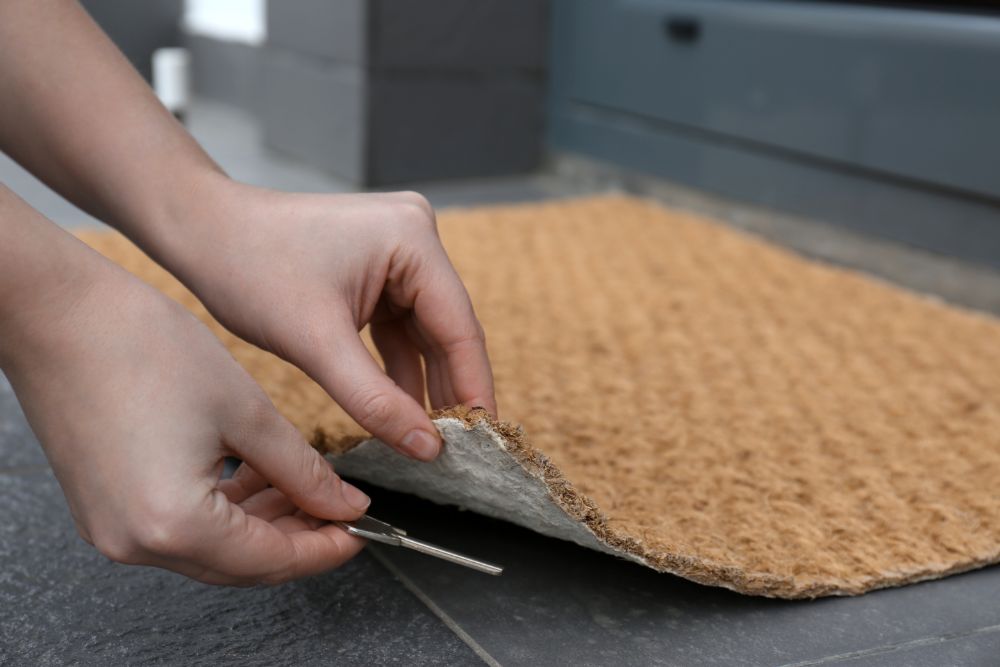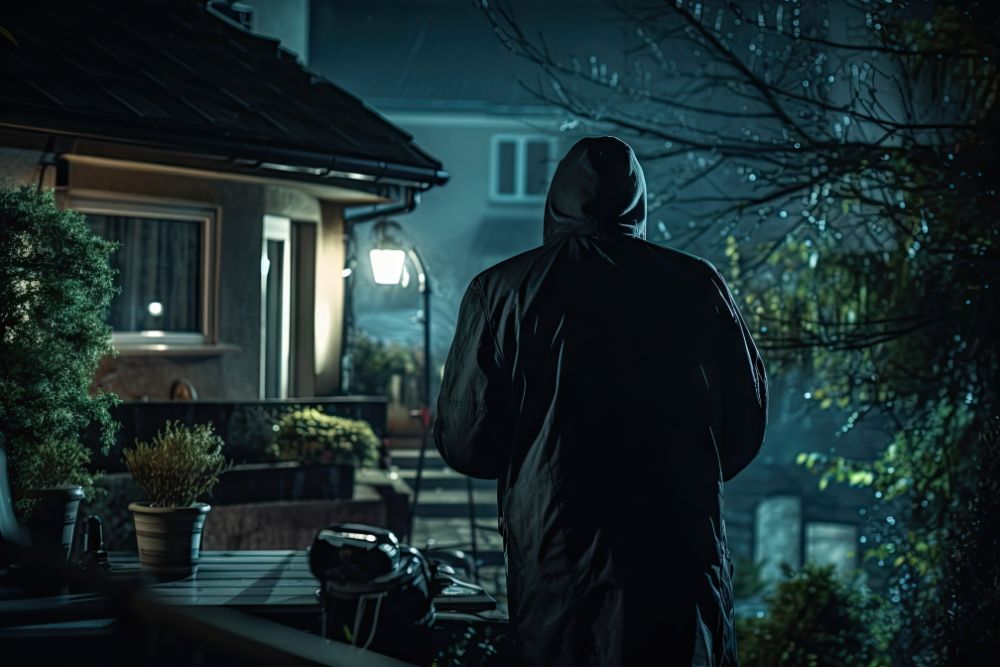Imagine the peace of mind that comes with knowing your home is secure, your family is safe, and your valuable possessions are well protected. That peace of mind can be yours by conducting a home security risk assessment—a comprehensive analysis of your home’s security vulnerabilities and potential threats.
Embark on a journey to safeguard your haven as we provide a step-by-step guide to conducting your own risk assessment and implementing effective measures to fortify your home.
Key Takeaways
- Understand home security risk assessment and its components for an effective evaluation.
- Conduct exterior, interior, and neighbourhood assessments to identify vulnerabilities and prioritise protective measures.
- Professional services are available to ensure optimal protection with access control systems, physical barriers & deterrents, emergency preparedness plans & ongoing maintenance.
Understanding Home Security Risk Assessment
Carrying out a home security risk assessment is a valuable action that boosts the safety of your property and loved ones by helping you outline possible weaknesses and implement efficient security measures.
It can be likened to a home security checklist that needs to be updated regularly, at least biennially, to keep up with the evolving landscape of potential threats.
Consider the many aspects of your home’s security, including:
- Physical barriers and deterrents, like well-lit exteriors and upgraded door locks
- Technical systems, such as alarms and carbon monoxide detectors
- Participating in a neighbourhood watch program to contribute to the overall security of your community
A comprehensive risk assessment considers all of these factors to ensure the safety of your home.

The Purpose of Risk Assessment
A risk assessment aims to pinpoint potential threats and vulnerabilities within your home and its surroundings, enabling you to enhance security accordingly.
By understanding the current security level of your property and pinpointing vulnerable areas that require attention, you can implement suitable measures to bolster your home’s security and protect your possessions.
A thorough risk assessment should encompass an evaluation of your property’s exterior, interior, and neighbourhood.
These elements are fundamental to gauging the total security of your home. Obtaining a professional home security assessment can further enhance your understanding of potential hazards and provide expert advice on the most effective security measures to put in place based on the identified risks.

Components of an Effective Assessment
A thorough security risk assessment is an amalgamation of various components that collectively evaluate your home’s security. These components include:
- Identification of assets
- Threat assessment
- Vulnerability assessment
- Risk analysis
- Mitigation strategies
- Emergency response planning
- Regular review and updates.
Focusing on these elements allows you to comprehensively assess the security of your home and put in place the necessary measures to mitigate risks.
For example, identifying assets such as perimeter alarm systems, access control systems, and physical barriers can help you determine the most appropriate security measures to protect your property.
Meanwhile, conducting a thorough vulnerability assessment allows you to analyse potential threats and identify areas where your home is most susceptible to security breaches.
Conducting Your Own Home Security Risk Assessment

Having grasped the significance of a home security risk assessment, you are ready to begin assessing your property. This involves examining your home’s exterior, interior, and neighbourhood aspects to identify potential vulnerabilities and implement suitable measures to enhance security.
Start by outlining your assets and pinpointing potential security threats and vulnerabilities, considering factors such as the layout of your property, the placement of windows and doors, and other potential entry points. It’s essential to focus on likely threats rather than attempting to address all possible threats, as this approach allows you to prioritize your security measures and allocate resources effectively.
Exterior Assessment
While assessing your home’s exterior, concentrate on doors, windows, and potential concealment areas to identify points that burglars might conveniently access.
For example, ensure that your doors are made of solid wood or metal and have secondary locks in place to enhance the initial layer of protection against a potential intruder.
Additionally, pay attention to the lighting around your home’s exterior. A well-lit exterior can serve as a deterrent to potential burglars attempting to gain entry to your residence.
Motion sensors and pathway lighting are viable options for illuminating your home’s perimeter and minimising the potential for break-ins.
Protect Your Business
Protect Your People
Book Your FREE Site Protection Survey
Interior Assessment
Appraising the interior of your home is vital in safeguarding personal property and deploying efficient security systems. Focus on your home’s living, sleeping, and storage areas and install and maintain alarms, cameras, and other security devices.
It’s also essential to be mindful of the visibility of valuables from the street. Prevent “window shopping” by burglars by keeping your valuable items out of sight and ensuring they are not easily discernible outside your residence.
One way to do this is by using window decals to protect valuables from potential theft.
Neighbourhood Assessment
A key element of your home security risk assessment involves gauging the safety of your neighbourhood. Assess local crime trends and patterns to understand your area’s potential risks and vulnerabilities.
Familiarise yourself with your neighbours, fostering a sense of community and trust, as this will help you stay informed of any suspicious activity or potential security threats in the area.
Participating in neighbourhood watch programs can also boost the collective safety of your community. These programs provide a means for neighbours to look out for one another, fostering a sense of community and helping to decrease crime in the area.
Professional Home Security Assessments

Although carrying out your home security risk assessment is imperative, it is also advisable to consider procuring a professional home security evaluation. Experts in the field can offer an extensive examination of your home’s security and detect potential hazards that may not be apparent to an untrained individual.
Professional assessments can provide invaluable insights and recommendations for enhancing your home’s security and offering installation and monitoring services to protect your property.
Services Offered by Professionals
Professional home security assessment services may include:
- Security system design
- Installation
- Monitoring
- Training for homeowners and staff
These experts can help you identify the most effective security measures for your property based on the identified risks and provide guidance on optimally securing your home.
Moreover, many professional security providers offer 24/7 monitoring services, ensuring that a trained specialist is always available to assist you in notifying the appropriate police departments and authorities in an emergency.
Finding the Right Expert
Selecting the right expert for your home security assessment is crucial. Investigate potential assessors’ credentials, qualifications, and expertise to find the best fit for your needs. Review customer feedback and consider companies or individuals with a strong reputation in the field.
Contact the team at Scaitec and book your security assessment today at 01709 761007.
Implementing Security Measures Based on Identified Risks

After performing the risk assessment and pinpointing potential vulnerabilities, the next step is to put in place security measures that counter the identified risks. This may involve:
- Installing access control systems
- Reinforcing physical barriers
- They are developing emergency preparedness plans for various scenarios, including break-ins, fires, and natural disasters.
Remember, implementing these measures aims to enhance the overall security of your home and protect your family and possessions from potential threats.
By being proactive and taking action based on your risk assessment, you’ll be well on your way to creating a safer, more secure environment for yourself and your loved ones.
Access Control Systems
Access control systems, such as smart locks and monitored alarms, can significantly enhance your home’s security by restricting unauthorised entry. These systems can include:
- Keypads
- Key cards
- Biometric scanners
- Passwords
These systems grant or deny access to individuals, ensuring that only authorised individuals can enter your property.
It’s essential to correctly install and maintain access control systems to guarantee optimal functionality and security.
Regular inspections and maintenance of the system will ensure that it’s operating effectively and that any potential security risks are promptly addressed.
Physical Barriers and Deterrents
Physical barriers and deterrents play a crucial role in preventing break-ins and enhancing the overall security of your home.
Reinforced doors and windows, motion-sensor lighting, and visible security cameras can all serve as effective deterrents for potential burglars.
Remember, the goal is to make it as difficult as possible for a would-be intruder to gain access to your property.
By implementing physical barriers and deterrents, you’ll protect your home from potential threats and discourage criminals from even attempting a break-in.
Emergency Preparedness
Developing and practising emergency preparedness plans for various scenarios is another essential aspect of securing your home. These plans should encompass steps for evacuation, contact information for emergency services, and a compilation of emergency supplies.
Regularly rehearsing these plans—at least annually—will ensure that your family is well-prepared to respond to any emergency, whether a break-in, a fire, or a natural disaster.
By being prepared, you can minimise the potential damage and ensure the safety of everyone in your home.
Ongoing Home Security Maintenance

Maintaining your home’s security isn’t a one-off event. Instead, it’s a continuous process that demands regular attention. To ensure that your security measures remain effective, you must periodically reassess your property and stay abreast of the latest security trends and technologies.
By continuously evaluating your home’s security and making necessary adjustments based on your reassessment findings, you can ensure that your property remains protected and adapts to any changes in the security landscape.
This proactive approach to your home’s security will help you stay one step ahead of potential threats, safeguarding your home and family for years.
Periodic Reassessment

Regular reassessments of your home’s security are vital to keep pace with any changes in risks and vulnerabilities.
By regularly reviewing the initial security risk assessment findings and accounting for any modifications that may have occurred since the last assessment, you can ensure that your security measures remain practical and current.
In addition to staying informed about the latest security trends and technologies, consider consulting with a security specialist to guarantee that your home security measures are functional and up-to-date.
This expert guidance can help you identify new vulnerabilities and implement the necessary adjustments to maintain the safety of your property, providing extra security.
Keeping Up with Security Trends
Keeping abreast of the most recent security trends and technologies is paramount for continuously enhancing your home’s security. By educating yourself on new developments in the field, you can adapt your security measures to address evolving threats and vulnerabilities.
Some ways to stay informed about the latest security trends include reading blogs and newsletters from reliable sources, monitoring pertinent intelligence sources, and staying apprised of the latest cybersecurity trends.
By keeping up with the most recent developments in security, you’ll be better equipped to protect your home and family from potential threats.

Summary
In conclusion, conducting a comprehensive home security risk assessment is crucial in ensuring the safety and security of your property and loved ones.
By evaluating your home’s exterior, interior, and neighbourhood aspects and enlisting the help of professional assessors, you can identify potential vulnerabilities and implement adequate security measures.
Stay proactive in maintaining your home’s security by conducting periodic reassessments and staying informed about the latest security trends. You can create a safer, more secure environment for your family and possessions with diligence and persistence.
Frequently Asked Questions
What is a home security assessment?
A Home Security Assessment is a comprehensive review of physical security features at home, including interviews with occupants to understand their security needs and daily activities.
What is included in a security risk assessment?
A Security Risk Assessment (or SRA) includes identifying assets, threats, and vulnerabilities (including their impacts and likelihood) and reviewing existing security policies, standards, guidelines and procedures.
How do you conduct a security risk assessment?
A security risk assessment involves defining business needs and assets, identifying risks and vulnerabilities, analysing existing controls, assessing the likelihood and impact of a threat, prioritising risks, and recommending appropriate authorities.
Regular reviews should also be conducted to ensure the risk assessment remains up-to-date.
How often should I conduct a home security risk assessment?
Conducting a home security risk assessment at least every two years for the best protection of your property is recommended.
Since pioneering Scaitec Security Solutions in 2005, Paul Scaife, with his roots in the industry dating back to 1994, has distinguished the firm as a leading provider of bespoke fire and security solutions, servicing clients across Sheffield, Rotherham, and surrounding areas.
His leadership, underpinned by accreditation from the Security Systems and Alarms Inspection Board, ensures that Scaitec surpasses client expectations by blending advanced technology with a deep understanding of their unique needs.
Paul's ethos champions innovation and efficiency, driving Scaitec to deliver tailored, cutting-edge solutions that enhance safety and operational ease.
Discover more about Paul’s commitment to excellence on LinkedIn.